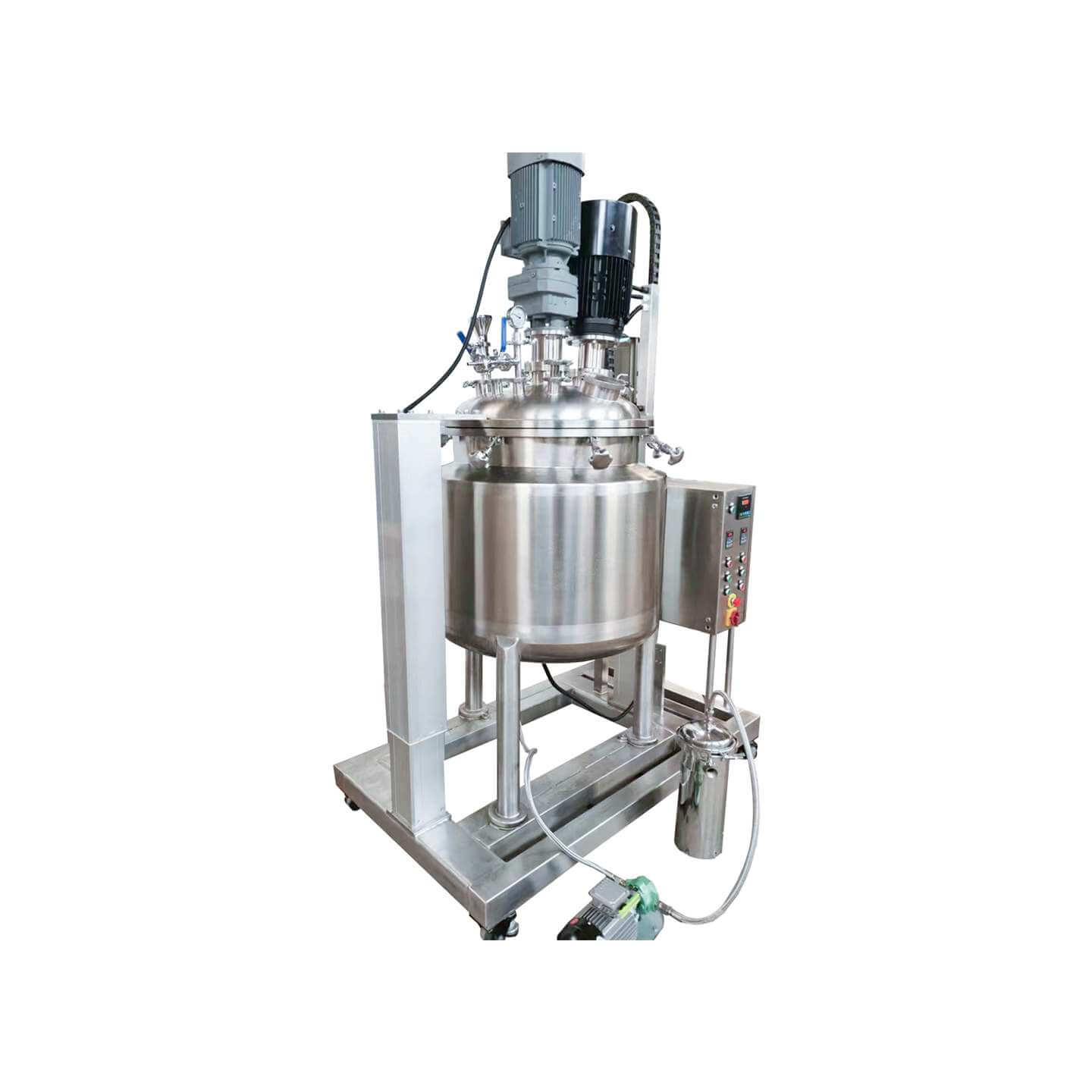

Laboratory Reactor
Laboratory reactor: used in the chemical industry, pesticide, paint, and other fields
Material
glass, stainless steel (316, 304), carbon steel, others
Capacity (L)
10-10000+
Mixing system
anchor, paddle, frame and others
Heating system
electric heating, oil heating and others
The laboratory reactor is small in size, beautiful in appearance, light, and fast in installation. It is composed of a pot body, pot cover, stirrer, jacket, support and transmission device, shaft sealing device, etc. The type of stirring device, rotation speed, sealing structure, heating method, etc. are produced.
Request a quoteA laboratory reactor is a common reaction vessel. The basic principle is similar to that of an ordinary chemical reactor. It is mainly based on the jacket of the laboratory reactor and uses heat transfer materials to increase the temperature of the materials in the laboratory reactor. According to the function of the stirrer, the heat transfer rate is improved and the temperature is uniform.
It is widely used in the entire process of rubber vulcanization, nitration, esterification, alkylation, polymerization, and condensation reactions, such as tubular reactors, dissolution reactors, polymerization reactors, etc. The materials are generally carbon alloy steel, stainless steel plate, zirconium, nickel-based (Harris, Monel, Incon) aluminum alloy, and polymer materials.

The laboratory reactor is a kind of reaction equipment that can carry out various catalytic reaction speeds, ultra-high pressure generation, hydrocracking reactions, vapor-liquid equivalents, etc. It is widely used in petrochemical equipment, organic chemistry, medicine, polymer materials, metallurgical industry, and other manufacturing industries. It has the characteristics of convenient operation, easy mixing, and accurate temperature control.
The laboratory reactor kettle is made of high-quality stainless steel, with left and right stainless steel head structures, vacuum packaging, organic sealing or packing sealing, and the stirring paddles can be customized with various blades. The inner pot and jacket supporting facilities and digital temperature control system can freely set the required temperature upper limit and limit value, detect temperature changes at any time, and improve the efficiency and safety of production.
The laboratory reactor kettle consists of a pot body, a large pot lid, a stirring device, a jacket, a support plate, a gear transmission, a water pump sealing device, etc (The heat insulation and heat preservation structures must be selected according to the processing technology). According to the material production rules and customer needs, the working pressure, temperature, material, mixing equipment type, speed ratio, sealing structure, heating method, etc. are determined for design and production. There are various types, specifications, and models of laboratory reactors. The working pressure is below 10Mpa and the capacity is between 50 and 300L. They are generally suitable for the development and application of new products in universities and scientific research institutions.
Advantages of laboratory reactors
1. The laboratory reactor has a compact structure and a small footprint: Since the laboratory reactor works under liquid, the equipment in the waste laboratory pool can be used immediately without fabrication, which can save a lot of basic costs. A professional equipment room for machinery, laboratory kettles, and motors.
2. Convenient maintenance of mechanical equipment: Small and medium-sized laboratory reactors can have their own mechanical equipment. Large and medium-sized laboratory reactors are generally equipped with active coupling mechanical equipment, making the maintenance of active mechanical equipment and mechanical equipment moderate and convenient.
3. Long continuous working time: Because the laboratory reactor is coaxial with the motor output, the shaft is short, the inverter component is light, the rolling bearing bears a small load (axial direction), and the service life is long.
4. There will be no cavitation damage or flushing problems in the laboratory: especially the latter makes actual operation very convenient.
5. Low noise, low motor temperature, and zero pollution to the natural environment.
6. The laboratory reactor adopts a reciprocating centrifugal impeller or two-piece centrifugal impeller structure, which further improves the passability of waste. It can effectively pass through 5 times the diameter of the laboratory reactor and solid particles with a diameter of about 50% of the diameter of the laboratory reactor.
7. The seal is made of new hard and corrosion-resistant tungsten-titanium material, allowing the kettle to operate safely and continuously for 8,000 hours.
8. A high-precision anti-interference leak detection sensor is installed in the sealed room of the laboratory reactor. Thermal-sensitive elements are embedded in the motor stator winding resistors for proactive maintenance of laboratory reactor motors in the laboratory.
9. A fully active control box for weapons and equipment can be used as required to perform active maintenance on leakage laboratories, electrification, loads, autoclave overheating, etc., which improves the safety factor and reliability of the product.




